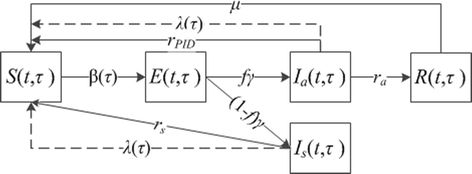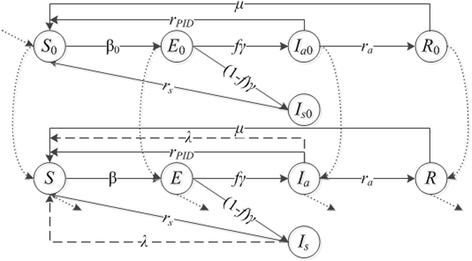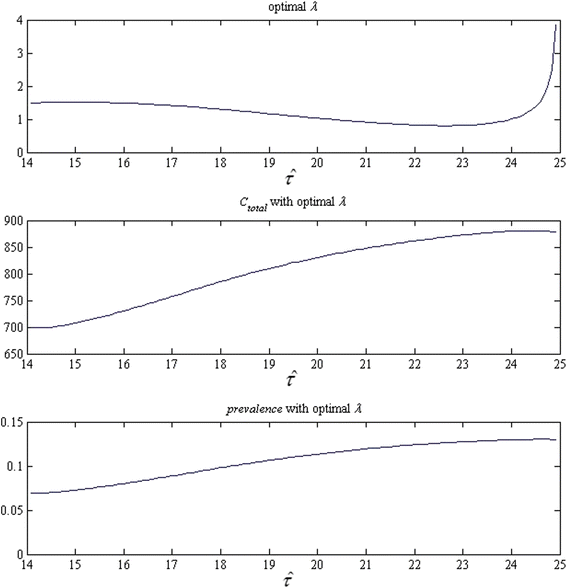Optimizing strategies for population-based chlamydia infection screening among young women: an age-structured system dynamics approach
- PMID: 26162374
- PMCID: PMC4498533
- DOI: 10.1186/s12889-015-1975-z
Optimizing strategies for population-based chlamydia infection screening among young women: an age-structured system dynamics approach
Abstract
Background: Chlamydia infection (CT) is one of the most commonly reported sexually transmitted diseases. It is often referred to as a "silent" disease with the majority of infected people having no symptoms. Without early detection, it can progress to serious reproductive and other health problems. Economical identification of asymptomatically infected is a key public health challenge. Increasing evidence suggests that CT infection risk varies over the range of adolescence. Hence, age-dependent screening strategies with more frequent testing for certain age groups of higher risk may be cost-saving in controlling the disease.
Methods: We study the optimization of age-dependent screening strategies for population-based chlamydia infection screening among young women. We develop an age-structured compartment model for CT natural progress, screening, and treatment. We apply parameter optimization on the resultant PDE-based system dynamical models with the objective of minimizing the total care spending, including screening and treatment costs during the program period and anticipated costs of treating the sequelae afterwards). For ease of practical implementation, we also search for the best screening initiation age for strategies with a constant screening frequency.
Results: The optimal age-dependent strategies identified outperform the current CDC recommendations both in terms of total care spending and disease prevalence at the termination of the program. For example, the age-dependent strategy that allows monthly screening rate changes can save about 5% of the total spending. Our results suggest early initiation of CT screening is likely beneficial to the cost saving and prevalence reduction. Finally, our results imply that the strategy design may not be sensitive to accurate quantification of the age-specific CT infection risk if screening initiation age and screening rate are the only decisions to make.
Conclusions: Our research demonstrates the potential economic benefit of age-dependent screening strategy design for population-based screening programs. It also showcases the applicability of age-structured system dynamical modeling to infectious disease control with increasing evidence on the age differences in infection risk. The research can be further improved with consideration of the difference between first-time infection and reinfection, as well as population heterogeneity in sexual partnership.
Figures






Similar articles
-
Systematic screening for Chlamydia trachomatis: estimating cost-effectiveness using dynamic modeling and Dutch data.Value Health. 2006 Jan-Feb;9(1):1-11. doi: 10.1111/j.1524-4733.2006.00075.x. Value Health. 2006. PMID: 16441519
-
Cost-effectiveness of partner pharmacotherapy in screening women for asymptomatic infection with Chlamydia Trachomatis.Value Health. 2001 May-Jun;4(3):266-75. doi: 10.1046/j.1524-4733.2001.43009.x. Value Health. 2001. PMID: 11705188
-
The program cost and cost-effectiveness of screening men for Chlamydia to prevent pelvic inflammatory disease in women.Sex Transm Dis. 2008 Nov;35(11 Suppl):S66-75. doi: 10.1097/OLQ.0b013e31818b64ac. Sex Transm Dis. 2008. PMID: 18830137
-
Screening and treating Chlamydia trachomatis genital infection to prevent pelvic inflammatory disease: interpretation of findings from randomized controlled trials.Sex Transm Dis. 2013 Feb;40(2):97-102. doi: 10.1097/OLQ.0b013e31827bd637. Sex Transm Dis. 2013. PMID: 23324973 Review.
-
The cost-effectiveness of screening men for Chlamydia trachomatis: a review of the literature.Sex Transm Dis. 2008 Nov;35(11 Suppl):S51-60. doi: 10.1097/OLQ.0b013e3181723dba. Sex Transm Dis. 2008. PMID: 18520977 Review.
Cited by
-
Optimal control strategies supported by system dynamics modelling: a study on hookworm disease in China.Infect Dis Poverty. 2025 Mar 19;14(1):22. doi: 10.1186/s40249-025-01293-w. Infect Dis Poverty. 2025. PMID: 40108721 Free PMC article.
-
COVID-19 in Shanghai: IPC Policy Exploration in Support of Work Resumption Through System Dynamics Modeling.Risk Manag Healthc Policy. 2020 Oct 8;13:1951-1963. doi: 10.2147/RMHP.S265992. eCollection 2020. Risk Manag Healthc Policy. 2020. PMID: 33116976 Free PMC article.
-
The Application of Systems Thinking to the Prevention and Control of Sexually Transmissible Infections among Adolescents and Adults: A Scoping Review.Int J Environ Res Public Health. 2023 May 2;20(9):5708. doi: 10.3390/ijerph20095708. Int J Environ Res Public Health. 2023. PMID: 37174226 Free PMC article.
-
A System Dynamics Simulation Applied to Healthcare: A Systematic Review.Int J Environ Res Public Health. 2020 Aug 8;17(16):5741. doi: 10.3390/ijerph17165741. Int J Environ Res Public Health. 2020. PMID: 32784439 Free PMC article.
References
-
- Anderson RM, May RM. Infectious disease of humans: dynamics and control. Oxford: Oxford University Press; 1991.
-
- Bailey NT. The mathematical theory of infectious diseases and its applications. 2. London: Hafner Press/MacMillian Pub; 1975.
Publication types
MeSH terms
Grants and funding
LinkOut - more resources
Full Text Sources
Other Literature Sources
Medical

